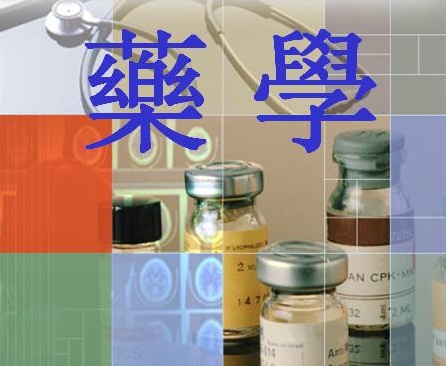|
Protective Index
The protective index (PI) is a comparison of the amount of a therapeutic agent that causes the therapeutic effect to the amount that causes toxicity. Quantitatively, it is the ratio given by the toxic dose divided by the therapeutic dose. A protective index is the toxic dose of a drug for 50% of the population ( TD50) divided by the minimum effective dose for 50% of the population ( ED50). A high protective index is preferable to a low one: this corresponds to a situation in which one would have to take a much higher dose of a drug to reach the toxic threshold than the dose taken to elicit the therapeutic effect. A drug should ordinarily only be administered if the protective index is greater than one, indicating that the benefit outweighs the risk. \text = \frac The protective index is similar to the therapeutic index, but concerns toxicity ( TD50) rather than lethality (); thus, the protective index is a smaller ratio. Toxicity can take many forms, as drugs typically have multiple ... [...More Info...] [...Related Items...] OR: [Wikipedia] [Google] [Baidu] [Amazon] |
TD50
In toxicology, the median toxic dose (TD50) of a drug or toxin is the dose at which toxicity occurs in 50% of cases. The ''type'' of toxicity should be specified for this value to have meaning for practical purposes. The median toxic dose encompasses the category of toxicity that is greater than half maximum effective concentration (ED50) but less than the median lethal dose (LD50). However, for some highly potent toxins (ex. lofentanil, botulinum toxin) the difference between the ED50 and TD50 is so minute that the values assigned to them may be approximated to equal doses. Since toxicity need not be lethal, the TD50 is generally lower than the median lethal dose (LD50), and the latter can be considered an upper bound for the former. However, since the toxicity is above the effective limit, the TD50 is generally greater than the ED50. If the result of a study is a toxic effect that does not result in death, it is classified as this form of toxicity. Toxic effects can be defined di ... [...More Info...] [...Related Items...] OR: [Wikipedia] [Google] [Baidu] [Amazon] |
ED-50
In pharmacology, an effective dose (ED) or effective concentration (EC) is the Dose (biochemistry), dose or concentration of a medication, drug that produces a biological response. The term "effective dose" is used when measurements are taken ''in vivo,'' while "effective concentration" is used when the measurements are taken ''in vitro''. Paracelsus#Toxicology, It has been stated that any substance can be toxic at a high enough dose. This concept was demonstrated in 2007 when a California woman died of water intoxication in KDND#"Hold Your Wee for a Wii" contest, a contest sanctioned by a radio station. The line between efficacy and toxicity is dependent upon the particular patient, although the dose administered by a physician should fall into the predetermined therapeutic window of the drug. The importance of determining the therapeutic range of a drug cannot be overstated. This is generally defined by the range between the minimum effective dose (MED) and the maximum tolerat ... [...More Info...] [...Related Items...] OR: [Wikipedia] [Google] [Baidu] [Amazon] |
Therapeutic Index
The therapeutic index (TI; also referred to as therapeutic ratio) is a quantitative measurement of the relative safety of a drug with regard to risk of overdose. It is a comparison of the amount of a therapeutic agent that causes toxicity to the amount that causes the therapeutic effect. The related terms therapeutic window or safety window refer to a range of doses optimized between efficacy and toxicity, achieving the greatest therapeutic benefit without resulting in unacceptable side-effects or toxicity. Classically, for clinical indications of an approved drug, TI refers to the ratio of the dose of the drug that causes adverse effects at an incidence/severity not compatible with the targeted indication (e.g. toxic dose in 50% of subjects, TD) to the dose that leads to the desired pharmacological effect (e.g. efficacious dose in 50% of subjects, ED). In contrast, in a drug development setting TI is calculated based on plasma exposure levels. In the early days of pharmaceu ... [...More Info...] [...Related Items...] OR: [Wikipedia] [Google] [Baidu] [Amazon] |
Upper Bound
In mathematics, particularly in order theory, an upper bound or majorant of a subset of some preordered set is an element of that is every element of . Dually, a lower bound or minorant of is defined to be an element of that is less than or equal to every element of . A set with an upper (respectively, lower) bound is said to be bounded from above or majorized (respectively bounded from below or minorized) by that bound. The terms bounded above (bounded below) are also used in the mathematical literature for sets that have upper (respectively lower) bounds. Examples For example, is a lower bound for the set (as a subset of the integers or of the real numbers, etc.), and so is . On the other hand, is not a lower bound for since it is not smaller than every element in . and other numbers ''x'' such that would be an upper bound for ''S''. The set has as both an upper bound and a lower bound; all other numbers are either an upper bound or a lower bound for ... [...More Info...] [...Related Items...] OR: [Wikipedia] [Google] [Baidu] [Amazon] |
